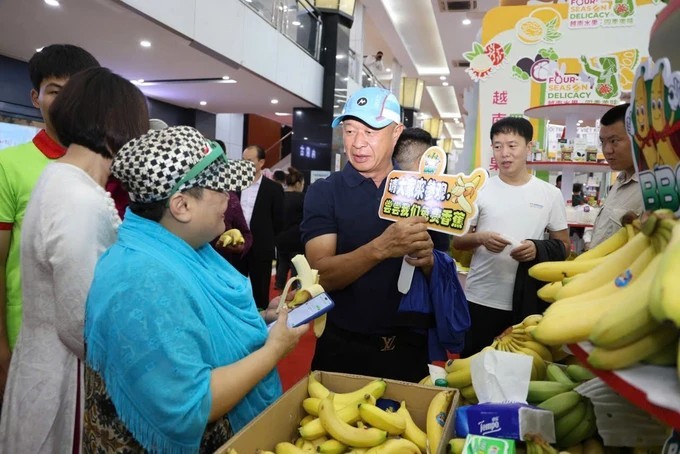The Ministry of Agriculture and Rural Development hosted the Vietnam-China Agricultural, Forestry and Fishery Import-Export Trade Connection Forum in Lang Son City, Lang Son Province on December 3.

The event aimed at highlighting the significant role of the Chinese market, which is one of Vietnam's three largest export markets, and the opportunities and challenges in agricultural trade cooperation between the two countries.
According to Deputy Minister of Agriculture and Rural Development Tran Thanh Nam, China is not only Vietnam's largest trading partner but also a key export market.
In the first 11 months of 2024, the bilateral trade value of agricultural, forestry and fishery products reached US$16 billion, an increase of 13.4 percent compared to the same period in 2023.
Among these, fruit and vegetable exports approximated US$4.1 billion, an increase of 28.7 percent; wood and wood products reached US$1.7 billion, an increase of 22.3 percent; and fishery products yeilded US$1.4 billion, an increase of 23.2 percent.
The growth is a result of the protocols signed between the Vietnamese Ministry of Agriculture and Rural Development (MARD) and the General Administration of Customs of China, which have opened the market for many products such as durian, jelly, bird's nest and various seafood.
Despite significant development, Vietnam still faces numerous challenges in officially exporting products like grapefruit, avocado, custard apple, star apple and medicinal herbs.
The strict requirements for product quality standards and production processes from Chinese consumers put pressure on Vietnamese enterprises.
Market information, customs clearance delays and lack of close coordination among relevant parties are also the hindering factors.

Deputy Minister of Agriculture and Rural Development Tran Thanh Nam suggested that businesses focus on developing production chains following industry sectors aligned with standardized specialized cultivation areas.
Besides, the Deputy Minister of Agriculture and Rural Development also emphasized the importance of ensuring accurate tracking transparency for planting areas, breeding areas and packaging facilities. Functional agencies need to coordinate closely to accelerate the issuance of planting and breeding area codes to meet export standards.

The Minister of Agriculture and Rural Development disclosed that in the coming time, Vietnam would continue to negotiate to export more new products to the market and strengthen cooperation with the southern border provinces of China, particularly, participating in cross-border e-commerce channels.
Vietnam set a target of developing the Chinese market sustainably, prioritize product quality and build the brand of Vietnamese agricultural products in China in 2025 and the following years.
























